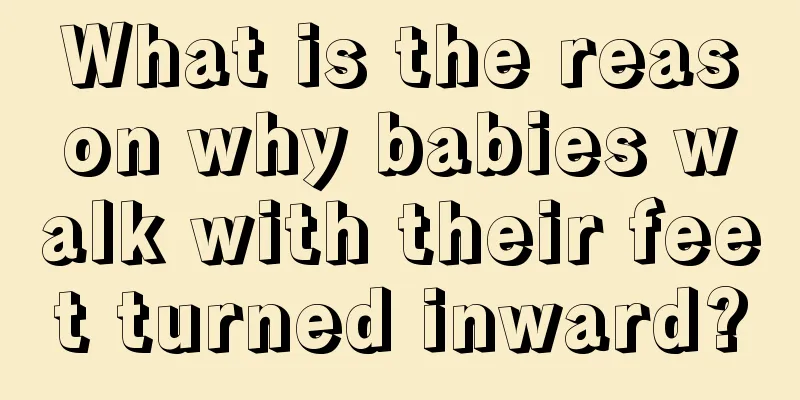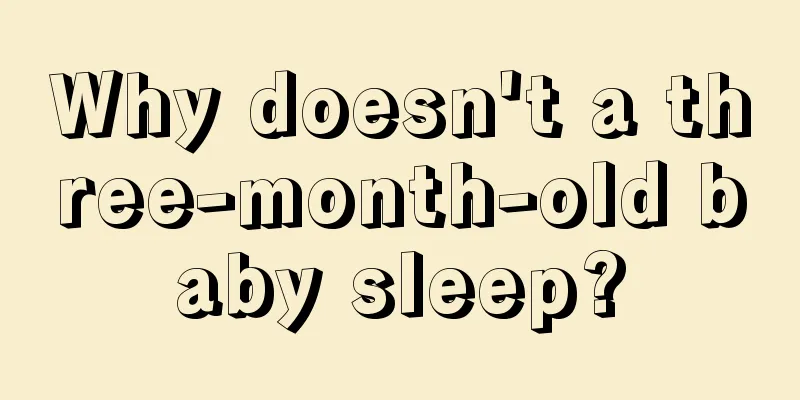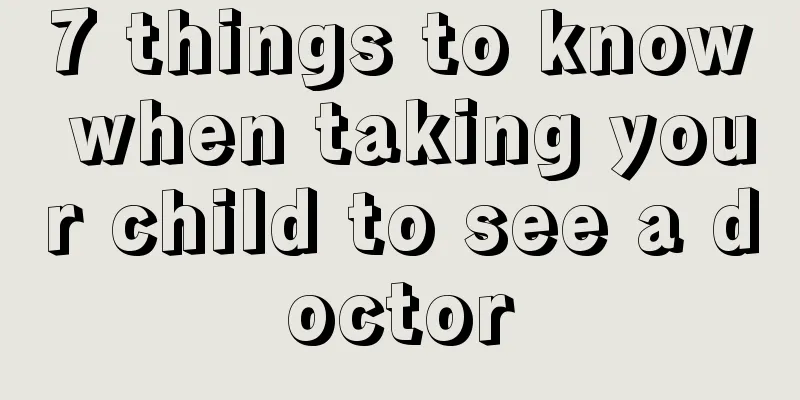What is the reason why babies walk with their feet turned inward?

|
Some conditions of children cannot be seen at first and will not be discovered until they learn to walk. For example, if a baby walks with his feet turned inward, parents will be very anxious to see this situation, because everyone knows that walking with feet turned inward is very ugly and will seriously affect the individual's image in the future. But here we remind parents not to worry too much. Many babies will have this situation. Now there are many correction methods specifically for turning the feet inward. As long as you persist in scientific correction for a long time, you can completely change this phenomenon. It should be noted that you should not scold the baby at this time, but be patient enough to guide and encourage the child to change his walking habits. So what causes this symptom? First, the factors that form the baby's inward eight characters 1. Genetics: If one of the father or mother has an inward-turned or outward-turned toe, it can have a direct impact on the next generation. 2. Sitting posture (for example, when kneeling, the posture is W sitting posture, that is, when sitting, the feet are on both sides of the buttocks) 3. Calcium deficiency. When the calcium content in the bones of young children is low, the bones in the feet become irregular. Therefore, when walking and standing, the bilateral hip joints are easily separated due to the effect of gravity, thus forming "splayed feet". It is best to correct it before the baby is 12 years old when his bones have not yet taken shape. Therefore, parents must help their children correct their behavior as early as possible. The younger the child is, the easier it is to correct. Second, let your child sit, stand, walk, and run in the correct posture. You can use the following methods: Method 1: Gait training method: Have the child walk in the correct pattern, and have an adult count commands while the child walks slowly to the beat. The number of exercises, steps and time per day can be determined step by step according to the degree of the child's gait deformity and the length of time it has been formed, and should be adjusted accordingly. Method 2: Straight-line step method: Draw two straight lines on the ground with a spacing of about 10-15 cm. Let the child walk back and forth on the straight lines on his toes and heels, with the pace going from slow to fast. This kind of conscious training and persistence will have a very good effect. Method three: Straight-line running method: Pull a bright plastic tape on the ground or draw a straight line with colored chalk, let the child stand with his feet parallel on both sides of the straight line, and let the child run along the straight line under the guidance of an adult. Do not let the child run with his feet splayed. In addition, to correct pigeon-toed feet, you can kick shuttlecock with the outside of your foot. When the footsteps are corrected, the child's normal walking will return to its original state. At this time, you should always pay attention and remind the child in time. Third, how to correct the splayed feet 1. If a child has bowlegs, proper exercise can help correct it, such as freehand gymnastics or gymnastics with equipment. When doing various postures, pay attention to the direction of your toes. If you have "inward-turned feet", you should pay attention to stretching your toes outwards; if you have "outward-turned feet", you should stretch your toes inwards as much as possible. 2. Keep the knees and ankles in a straight line, especially when doing leg raises, squats, jumping and other movements. The toes should be consciously aligned in the direction of progress and move in a straight line. 3. Another method is to let the child run or walk in places like sand. Parents should pay attention to the direction of the child’s footprints. 4. Dancing can also correct "inward-turned feet", but the range of motion of dancing is a bit large. Teaching children to kick shuttlecock is a good exercise to help correct inward-turned feet. For "inward-turned feet", you can do more outward kicks (that is, bend your knees inward and kick with the outside of your feet). |
<<: How to treat runny nose in children
>>: What are the solutions for teething problems in children?
Recommend
What should I do if my baby has phlegm in his throat?
It is very common to have phlegm in the throat. T...
What is the impact of patent ductus arteriosus on children?
Have you ever heard of patent ductus arteriosus? ...
Height and weight standards for three-year-old children
As children grow up, their physical development i...
How to quickly treat cough in children?
Each of us should have experienced the problem of...
How to deal with children’s nose bleeding due to picking their nose?
Children are prone to nosebleeds, so parents shou...
What kind of children can grow taller?
Many parents worry about their children's gro...
High testosterone levels in children
If a child has too high a level of male hormone, ...
What are the dangers of childhood obesity?
Due to the improvement of the quality of life in ...
Why does my baby have a cold and urinate less?
Cold is a disease that the human body is relative...
What are the best nuts for children?
Eating nuts is a great choice for children. Nuts ...
Children's feet have lumps
Children like to run around and they like to run ...
What are the symptoms of zinc deficiency in children?
The issue of nutritional supplementation for chil...
What to do if your child has conjunctivitis
Conjunctivitis is a common clinical disease, whic...
Blood in the stool in children
With the continuous development of modernization,...
Baby's butt hurts when defecating and keeps crying
When the baby's buttocks hurt when defecating...









